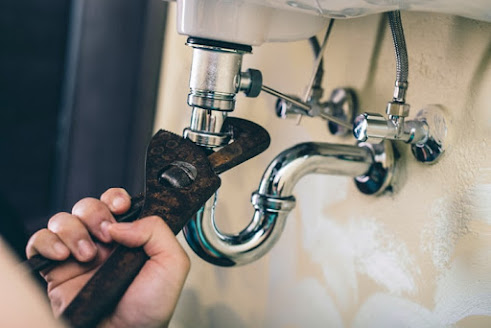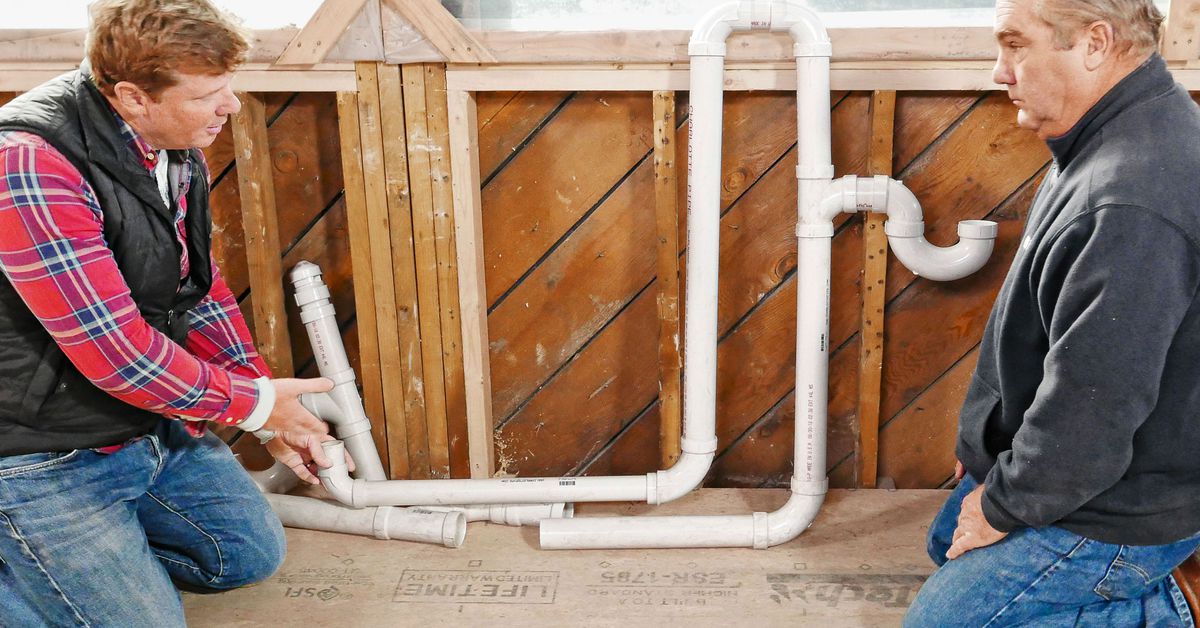Determining And Dealing With Plumbing Noises In Your Home
Determining And Dealing With Plumbing Noises In Your Home
Blog Article
Each person has got their own conception in relation to How To Fix Noisy Pipes.

To detect loud plumbing, it is necessary to establish initial whether the undesirable noises occur on the system's inlet side-in other words, when water is turned on-or on the drainpipe side. Sounds on the inlet side have actually varied reasons: extreme water pressure, worn valve and also tap components, incorrectly linked pumps or other home appliances, improperly placed pipeline bolts, and also plumbing runs consisting of a lot of tight bends or other constraints. Noises on the drain side usually stem from inadequate area or, just like some inlet side noise, a layout containing limited bends.
Hissing
Hissing sound that happens when a faucet is opened slightly usually signals extreme water pressure. Consult your local public utility if you presume this problem; it will certainly have the ability to tell you the water stress in your location and can install a pressurereducing valve on the incoming water supply pipeline if required.
Thudding
Thudding sound, typically accompanied by shuddering pipelines, when a faucet or appliance shutoff is shut off is a condition called water hammer. The sound as well as vibration are brought on by the reverberating wave of pressure in the water, which unexpectedly has no location to go. Sometimes opening a valve that releases water rapidly right into an area of piping containing a constraint, elbow joint, or tee installation can produce the very same condition.
Water hammer can generally be treated by installing installations called air chambers or shock absorbers in the plumbing to which the problem shutoffs or faucets are attached. These devices permit the shock wave created by the halted circulation of water to dissipate in the air they have, which (unlike water) is compressible.
Older plumbing systems may have brief vertical areas of capped pipe behind wall surfaces on faucet competes the exact same objective; these can eventually full of water, lowering or ruining their performance. The cure is to drain pipes the water system totally by shutting off the main water valve as well as opening all faucets. After that open the primary supply shutoff and shut the faucets one by one, beginning with the faucet nearest the shutoff and ending with the one farthest away.
Babbling or Screeching
Extreme chattering or shrilling that happens when a shutoff or faucet is switched on, which usually vanishes when the installation is opened fully, signals loose or malfunctioning internal parts. The remedy is to replace the valve or tap with a brand-new one.
Pumps and home appliances such as cleaning machines as well as dishwashers can move electric motor sound to pipes if they are incorrectly attached. Connect such items to plumbing with plastic or rubber hoses-never stiff pipe-to isolate them.
Various Other Inlet Side Noises
Squeaking, squeaking, scraping, breaking, and also touching usually are triggered by the growth or tightening of pipelines, usually copper ones supplying hot water. The noises happen as the pipelines slide versus loosened fasteners or strike nearby residence framework. You can often determine the location of the issue if the pipelines are exposed; just adhere to the audio when the pipes are making noise. Probably you will certainly discover a loose pipeline wall mount or a location where pipes lie so near to flooring joists or other framing pieces that they clatter versus them. Affixing foam pipeline insulation around the pipes at the point of get in touch with must correct the trouble. Make certain straps and hangers are protected as well as supply ample support. Where possible, pipe fasteners must be connected to substantial architectural elements such as foundation walls rather than to framing; doing so minimizes the transmission of resonances from plumbing to surface areas that can intensify and also move them. If attaching bolts to framework is inescapable, wrap pipes with insulation or other resilient material where they contact fasteners, and sandwich the ends of new fasteners between rubber washers when installing them.
Correcting plumbing runs that struggle with flow-restricting tight or various bends is a last resort that needs to be taken on just after getting in touch with a skilled plumbing contractor. Unfortunately, this situation is fairly common in older houses that might not have actually been constructed with interior plumbing or that have seen several remodels, especially by amateurs.
Drain Sound
On the drain side of plumbing, the chief goals are to remove surface areas that can be struck by dropping or hurrying water as well as to insulate pipes to have inescapable noises.
In new construction, bath tubs, shower stalls, bathrooms, as well as wallmounted sinks and containers need to be set on or versus resilient underlayments to reduce the transmission of audio with them. Water-saving bathrooms and taps are much less noisy than conventional designs; install them instead of older kinds even if codes in your area still permit making use of older fixtures.
Drains that do not run up and down to the basement or that branch right into straight pipe runs sustained at floor joists or various other framing present specifically bothersome noise troubles. Such pipes are large sufficient to radiate considerable resonance; they also lug considerable amounts of water, that makes the circumstance even worse. In brand-new construction, define cast-iron soil pipelines (the big pipes that drain pipes toilets) if you can manage them. Their massiveness has much of the sound made by water passing through them. Additionally, avoid transmitting drainpipes in wall surfaces shown to bed rooms and also spaces where individuals gather. Wall surfaces including drains ought to be soundproofed as was defined earlier, making use of double panels of sound-insulating fiberboard as well as wallboard. Pipelines themselves can be wrapped with special fiberglass insulation created the purpose; such pipes have an invulnerable plastic skin (sometimes consisting of lead). Outcomes are not always acceptable.
WHY IS MY PLUMBING MAKING SO MUCH NOISE?
This noise indeed sounds like someone is banging a hammer against your pipes! It happens when a faucet is opened, allowed to run for a bit, then quickly shut — causing the rushing water to slam against the shut-off valve.
To remedy this, you’ll need to check and refill your air chamber. Air chambers are filled with — you guessed it — air and help absorb the shock of moving water (that comes to a sudden stop). Over time, these chambers can fill with water, making them less effective.
You’ll want to turn off your home’s water supply, then open ALL faucets (from the bathroom sink to outdoor hose bib) to drain your pipes. Then, turn the water back on and hopefully the noise stops! If you’re still hearing the sound, give us a call to examine further.
Whistles
Whistling sounds can be frustrating, as sometimes the source isn’t easily identified. However, if you can pinpoint which faucet or valve that may be the cause, you’ll likely encounter a worn gasket or washer — an easy fix if you replace the worn parts!Whistling sounds from elsewhere can mean a number of things — from high water pressure to mineral deposits. Your best plan of attack here is to give our plumbing experts a call. We’ll be able to determine where the noise is coming from and what the cause may be, then recommend an effective fix!
Cracks or Ticks
Cracking or ticking typically comes from hot water going through cold, copper pipes. This causes the copper to expand resulting in a cracking or ticking sound. Once the pipes stop expanding, the noise should stop as well.
Pro tip: you may want to lower the temperature of your water heater to see if that helps lessen the sound, or wrapping the pipe in insulation can also help muffle the noise.
Bangs
Bangs typically come from water pressure that’s too high. To test for high water pressure, get a pressure gauge and attach it to your faucet. Water pressure should be no higher than 80 psi (pounds per square inch) and also no lower than 40 psi. If you find a number greater than 80 psi, then you’ve found your problem!
Next step is to give us a call in order to install a pressure regulator. Trust us, you don’t want to wait to resolve this issue. Not only is the sound annoying, but high water pressure can be destructive to your home — including damaging certain appliances, like your washer and dishwasher.
Dripping
You might be accustom to the slow quiet drip your kitchen faucet makes. You might have even tuned out your bathroom sink dripping and drabbing all day long — but it’s time to find its cause.
A slow drip could signify a variety of easy to fix issues, such as a worn out O ring, or loose part. And by ignoring the drip, you could be wasting up to 2,000 gallons of water a year! So start conserving water — get it looked at ASAP.
https://www.pwessig.com/blog/2018/december/why-is-my-plumbing-making-so-much-noise-/

I hope you liked our article on Why Do My Pipes Make Noises. Thanks for taking the time to read through our article. Sharing is caring. You just don't know, you may very well be doing someone a favor. Thanks a lot for your time invested reading it.
Hire A Pro Report this page